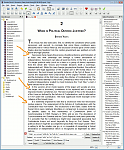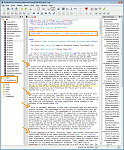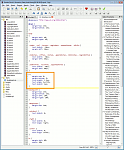Here is the way the book looks in Book View. As you can see, I have a slight indentation (1.2 em) at each paragraph:

If you get to the Code View (View - Code View) (or the button on the top menu, it looks like a "<>"). You will see all of your code:

At the top, you hopefully see something like:
Code:
<link href="../Styles/stylesheet.css" rel="stylesheet" type="text/css" />
This means that CSS is being applied to your document. On the left side of Sigil, you should see a folder named "Styles", with that CSS file inside (in my case, the stylesheet is called "stylesheet.css").
Side Note: If you DO NOT see a CSS file in your Styles folder. That means you will have to create one.
Side Note #2: If you see a CSS file in your "Styles" folder, but DO NOT see the <link href [...]> at the top of your code, you can easily do this by following the instructions here for "Link Stylesheet":
http://web.sigil.googlecode.com/git/...xt/styles.html
If you open that the CSS stylesheet, you should hopefully see some generic code. What you are looking for is the section which assigns styles to "p" tags:

It is this area where you want to add "text-indent: #.#em;", where "#.#" is the amount of spacing you want, and "em" is the unit of spacing ("1em" is approximately the width of one 'M' character).
Usually, it is recommended to use anywhere between 1 to 2 em (I prefer 2em, JSWolf prefers 1.2em, others prefer smaller/larger).
For example, this is what happens when you change the text-indent to 6em:

If you need any more help, feel free to ask.

Quote:
Originally Posted by pargoo

Thanks for the replies so far. What I was aiming for was the customary 5-character indent as per Standard Manuscript Format.
|
Doing a "5-character indent" is from the ol' bygone era of typewriters (oh the horrors this causes in some documents). It is not the recommended way to do things in the digital world at all. Your best bet is to just choose a text-indent between 1em to 2em. Then you can easily go into the CSS and change one tiny number, and every single paragraph can change at once.
